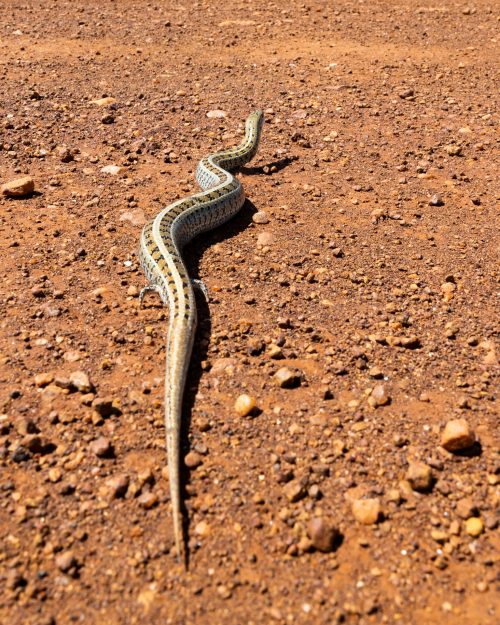There comes a time when all youngsters have to leave their homes, becoming independent and learning to fend for themselves — and such is the case with Risasi’s cubs. However, in the cheetah world, it's the mom who leaves her cubs in search of a new mate.
It has been exactly 16 months since we first saw Risasi after having given birth in the first week of June 2022. In the subsequent weeks, we saw her frequently hunting to feed her suckling cubs. She was every Thompson Gazelle's worst nightmare, taking down one after another. Two months later, at the end of July she finally brought her four cubs out in the open.
Now, sixteen months later, two out of a litter of four remain. While sad, this is still impressive as only 7-15% of cheetah cubs reach independence. These two male cubs are her first to do so and we hope they have carefully watched and learned from their incredible mother. From this moment on, they need to not only find food, but also to learn how to protect their own lives in the competition for resources.
Amidst contradictory sightings, it is now clear that our beloved Angama Lioness has only two of her three cubs, after losing one somehow. With the big male that killed her previous litter of four cubs still hanging around, we are holding thumbs these two have a chance to make it to adulthood.
The wild is full of danger everywhere, especially if you are a young pup, cub, calf or foal. Unable to defend themselves, cubs are vulnerable to attack from large birds, hyenas, snakes and especially rival male lions. Earlier this year in January, we recorded seven cubs born around the same time in the Egyptian Pride from different mothers.
Nine months later, they have gone from seven, to five, then down to three — and now just two remain. As formidable as lions are, not even their cubs are exempt from the harsh reality of the wild.
The Sausage Tree Pride that we seldom see appears to be doing very well as the three cubs we saw in September last year are all grown up. Now, they also have two new additions to the pride. They were seen squabbling over the last bit of a zebra kill with the big Lamai male hogging the final piece.
The older, more experienced female, Kinky Tail, was a distance away from the pride mating with another of the Lamai males. Kinky Tail is probably the oldest female in the Triangle at the moment. Female lions usually start to decrease their breeding habits at the age of 11 years but can breed up to 15 years of age.
The highlight of every Migration season has always been when the herds attempt the perilous river crossings. However, plenty of other animals also make the crossing in their endless search for greener pastures, from lions, elephants, leopards and even giraffes. Tall and heavy, giraffes have it easy as seen by this tower who were making their way towards the Triangle.
With the Migration still lingering here with us, a recent crossing close to Purungat Bridge left many wildebeest dead in a stampede. Their bodies washed to the banks of the river and hundreds of scavenging birds were ready and waiting to feast on the carcasses. There is a heavy stench around the bridge and these carcasses will feed scavengers and tiny organisms in the river for weeks.
In order to catch a snake, a heron will stand very still and let the snake slither into range. Once it is close, it will lash out with its long beak aiming for the head. This black-headed heron appeared to have the snake swallowed when it started writhing, forcing the heron to regurgitate the snake back up before finally getting it down.

In a remarkable sighting this time last year, Robert came across a Western Serpentiform skink. The four near-useless legs and a notched tongue (rather than forked) were the giveaway — classifying it in the lizard family, rather than the snake one. A truly rare sighting, this skink has only been photographed a few times and was previously thought to be extinct.
Filed under: This Week at Angama
Subscribe for Weekly Stories
Comments (0):

Weddings in the Mara